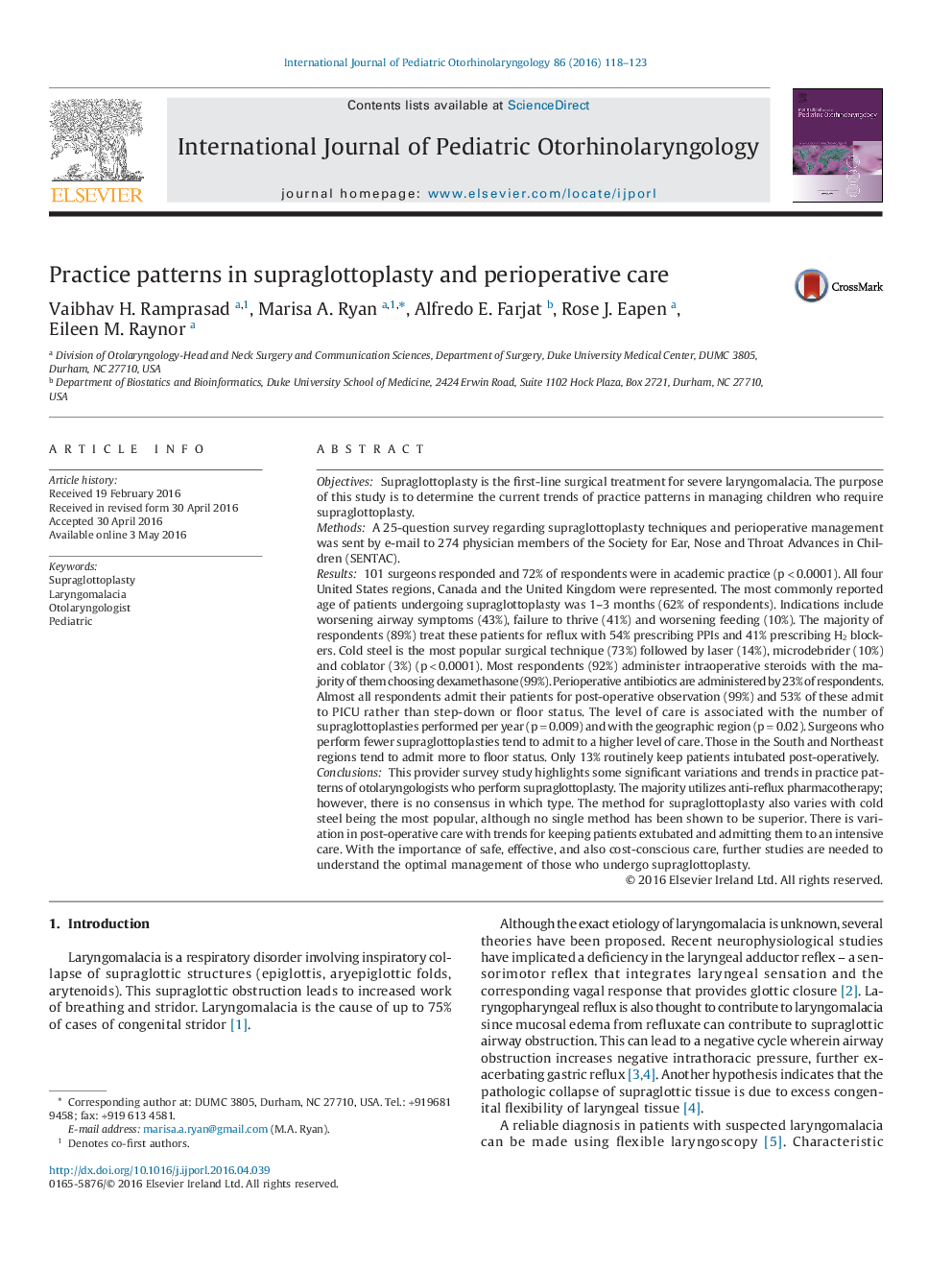| Article ID | Journal | Published Year | Pages | File Type |
|---|---|---|---|---|
| 6213201 | International Journal of Pediatric Otorhinolaryngology | 2016 | 6 Pages |
ObjectivesSupraglottoplasty is the first-line surgical treatment for severe laryngomalacia. The purpose of this study is to determine the current trends of practice patterns in managing children who require supraglottoplasty.MethodsA 25-question survey regarding supraglottoplasty techniques and perioperative management was sent by e-mail to 274 physician members of the Society for Ear, Nose and Throat Advances in Children (SENTAC).Results101 surgeons responded and 72% of respondents were in academic practice (pâ<â0.0001). All four United States regions, Canada and the United Kingdom were represented. The most commonly reported age of patients undergoing supraglottoplasty was 1-3 months (62% of respondents). Indications include worsening airway symptoms (43%), failure to thrive (41%) and worsening feeding (10%). The majority of respondents (89%) treat these patients for reflux with 54% prescribing PPIs and 41% prescribing H2 blockers. Cold steel is the most popular surgical technique (73%) followed by laser (14%), microdebrider (10%) and coblator (3%) (pâ<â0.0001). Most respondents (92%) administer intraoperative steroids with the majority of them choosing dexamethasone (99%). Perioperative antibiotics are administered by 23% of respondents. Almost all respondents admit their patients for post-operative observation (99%) and 53% of these admit to PICU rather than step-down or floor status. The level of care is associated with the number of supraglottoplasties performed per year (pâ=â0.009) and with the geographic region (pâ=â0.02). Surgeons who perform fewer supraglottoplasties tend to admit to a higher level of care. Those in the South and Northeast regions tend to admit more to floor status. Only 13% routinely keep patients intubated post-operatively.ConclusionsThis provider survey study highlights some significant variations and trends in practice patterns of otolaryngologists who perform supraglottoplasty. The majority utilizes anti-reflux pharmacotherapy; however, there is no consensus in which type. The method for supraglottoplasty also varies with cold steel being the most popular, although no single method has been shown to be superior. There is variation in post-operative care with trends for keeping patients extubated and admitting them to an intensive care. With the importance of safe, effective, and also cost-conscious care, further studies are needed to understand the optimal management of those who undergo supraglottoplasty.
